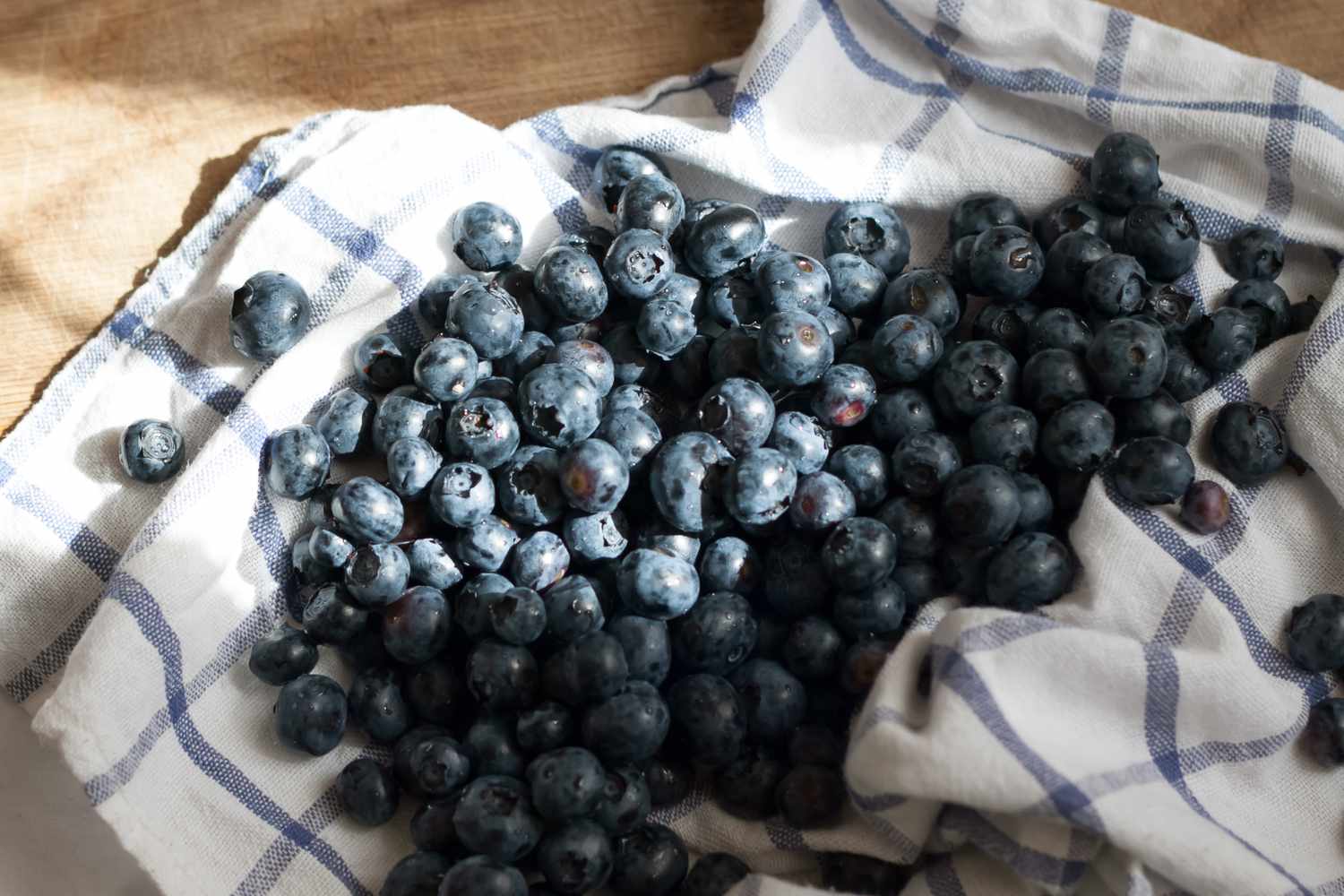

Articles
How To Store Fresh Blueberries
Modified: August 16, 2024
Learn effective methods and tips for storing fresh blueberries in this informative article. Keep your blueberries fresh for longer and enjoy their delicious taste!
(Many of the links in this article redirect to a specific reviewed product. Your purchase of these products through affiliate links helps to generate commission for Storables.com, at no extra cost. Learn more)
Introduction
Welcome to the world of fresh blueberries! These small, delicious berries are not only packed with flavor but also rich in vitamins, minerals, and antioxidants. Whether you picked them yourself or bought them from the local farmer’s market, it’s important to know how to store fresh blueberries properly to ensure their longevity and flavor.
In this article, we will guide you through the process of storing fresh blueberries, from selecting the right berries to cleaning and preserving them. By following these simple steps, you’ll be able to enjoy these delightful fruits for longer periods and incorporate them into your favorite recipes.
So, let’s dive into the world of blueberries and explore the best practices for storing them to maintain their peak freshness and taste.
Key Takeaways:
- Properly storing fresh blueberries is essential for maintaining their flavor and nutritional value. From selecting the freshest berries to washing, drying, and storing them in the refrigerator or freezer, these steps will help you enjoy delicious blueberries for longer periods.
- Handle fresh blueberries with care, from selecting the best berries to washing, drying, and storing them properly. Whether in the refrigerator or freezer, following these guidelines will ensure that you can savor the sweetness and versatility of blueberries all year round.
Read more: How To Store Fresh Picked Blueberries
Understanding Blueberries
Before we delve into the intricacies of storing blueberries, it’s important to have a basic understanding of these marvelous fruits. Blueberries come in various varieties, including highbush, lowbush, and rabbiteye, each with its own unique flavor profile and growing characteristics.
Blueberries are known for their deep blue color, which is an indication of their ripeness and nutritional value. These berries are packed with essential vitamins such as vitamin C, vitamin K, and manganese, as well as dietary fiber and antioxidants that promote good health.
When selecting blueberries for storage, look for firm berries with a vibrant color. Avoid berries that are soft, mushy, or have any moldy spots. The size of the berries may vary depending on the variety, so don’t be alarmed if you find both larger and smaller berries in the same batch.
Remember, freshness is key when it comes to blueberries. The sooner you can store them after harvesting or purchasing, the better. Now that you understand the basics of blueberries, let’s move on to the next step: selecting the freshest berries for storage.
Selecting Fresh Blueberries
When it comes to selecting fresh blueberries, there are a few key factors to consider. By following these guidelines, you can ensure that you’re choosing the best berries for storage:
- Look for plump and firm berries: Fresh blueberries should have a plump texture and a firm feel to the touch. Avoid berries that are soft or have wrinkles, as these are signs of overripeness and may not last as long in storage.
- Check for a vibrant color: The color of blueberries can range from a deep blue to a purplish hue. Look for berries that have a vibrant and uniform color. Avoid berries that have a green or red tint, as these are likely underripe.
- Avoid moldy or damaged berries: Inspect the berries for any signs of mold or damage. If you notice any berries that have moldy spots or bruises, it’s best to discard them to prevent the mold from spreading to the rest of the batch.
- Consider the size: Blueberries come in various sizes, depending on the variety. While larger berries may seem more appealing, smaller berries can be just as flavorful. Don’t be afraid to mix different sizes in your selection.
- Smell the berries: Though not always necessary, you can give the blueberries a gentle sniff. They should have a fresh and sweet aroma. If there is any off-putting smell, it may indicate that the berries are spoiled.
By following these guidelines, you can ensure that you’re selecting the freshest blueberries for storage. Remember, the quality of the berries at the time of purchase will greatly affect their longevity in storage.
Washing Blueberries
Once you’ve selected the freshest blueberries, it’s important to give them a thorough rinse before storing or consuming them. Washing blueberries helps remove any dirt, debris, or pesticides that may be present on the surface.
Here’s a step-by-step guide on how to wash blueberries:
- Prepare a colander or strainer: Place a colander or strainer in your sink to make it easier to drain the water from the berries.
- Rinse the berries: Place the blueberries in the colander or strainer and rinse them under cool running water. Gently swish the berries around to ensure that all sides are thoroughly rinsed.
- Remove any stems or leaves: While washing, you may come across any remaining stems or leaves on the blueberries. Simply pluck them off and discard them.
- Inspect for any spoiled berries: As you wash the berries, keep an eye out for any berries that appear moldy or have bruises. Remove any such berries from the batch to prevent the spread of mold.
- Drain the excess water: After rinsing, gently shake the colander or strainer to remove any excess water. Avoid using paper towels to dry the berries, as they may leave behind lint.
- Pat dry gently if desired: If you prefer, you can pat the berries dry with a clean kitchen towel or paper towel. Be gentle to avoid damaging the delicate berries.
It’s important to note that you should only wash blueberries just before you’re ready to use or store them. Washing them too far in advance can shorten their shelf life.
Now that your blueberries are clean and ready, it’s time to move on to the next step: drying them properly to prevent moisture buildup.
Drying Blueberries
After washing your blueberries, it’s important to dry them properly to remove excess moisture. Moisture can contribute to the growth of bacteria and accelerate spoilage. Here’s how you can dry blueberries effectively:
- Spread them on a clean towel: Place the washed blueberries on a clean, dry towel in a single layer. Make sure the berries are evenly distributed and not crowded together.
- Gently pat dry: Use another clean towel or paper towel to gently pat dry the blueberries. Avoid rubbing them vigorously, as it can damage the delicate skin.
- Air dry for a few minutes: Allow the blueberries to air dry for a few minutes. This will help evaporate any remaining moisture on the surface of the berries.
- Inspect for any dampness: After air drying, check if there is any residual dampness. If you notice any wet spots, gently blot them with a dry portion of the towel or paper towel.
- Ensure completely dry: It’s crucial to ensure that the blueberries are completely dry before storing them. Any moisture left on the berries can lead to premature spoilage.
By properly drying your blueberries, you can minimize the risk of moisture buildup and prolong their freshness. Once the berries are dry, you can move on to storing them in the refrigerator or freezing them for long-term storage.
Now that your blueberries are clean, dry, and ready to be stored, let’s explore the best methods for storing fresh blueberries to maintain their quality and flavor.
Store fresh blueberries in the refrigerator in a breathable container, such as a paper bag or a shallow dish covered with plastic wrap. This will help to maintain their freshness and prevent them from becoming mushy.
Read more: How To Store Blueberry Pie
Storing Blueberries in the Refrigerator
Storing blueberries in the refrigerator is an excellent way to extend their shelf life while maintaining their freshness. Follow these steps to store blueberries in the refrigerator:
- Do not wash before storing: It’s important to note that you should not wash blueberries before storing them in the refrigerator. Washing the berries prior to storage can introduce excess moisture, which can lead to faster spoilage.
- Keep them dry: Ensure that the blueberries are completely dry before placing them in the refrigerator. Excess moisture can cause the berries to become mushy and rot.
- Transfer to an airtight container: Place the unwashed and dry blueberries in a clean, airtight container or a resealable plastic bag. Try to remove as much air as possible from the container or bag before sealing it.
- Store in the crisper drawer: Ideally, store the container of blueberries in the crisper drawer of your refrigerator. This drawer offers a slightly higher humidity level, which helps to maintain the berries’ freshness.
- Avoid storing near ethylene-producing fruits: Blueberries are sensitive to ethylene gas, which is naturally produced by certain fruits, such as apples and bananas. Avoid storing blueberries near these fruits, as it can cause them to ripen and spoil more quickly.
- Check and remove any spoiled berries: Periodically check the container for any spoiled or moldy berries. Remove them immediately to prevent them from affecting the other berries.
- Consume within a week: Blueberries stored in the refrigerator can typically stay fresh for up to a week. However, it’s best to consume them as soon as possible for the best flavor and texture.
By following these guidelines, you can ensure that your blueberries stay fresh and delicious for a longer period in the refrigerator. Now let’s explore another storage option: freezing blueberries for long-term storage.
Freezing Blueberries
Freezing blueberries is an excellent way to preserve their freshness for an extended period. Whether you have a surplus of blueberries or want to stock up for future use, freezing is a simple and effective storage method. Here’s a step-by-step guide on how to freeze blueberries:
- Wash and dry the blueberries: Start by washing the blueberries under cool running water and then pat them dry thoroughly. Remember not to soak the berries, as excessive moisture can affect their texture during freezing.
- Remove any stems or leaves: Check the blueberries for any remaining stems or leaves and remove them.
- Spread the blueberries on a baking sheet: Arrange the dry blueberries in a single layer on a baking sheet lined with parchment paper or a silicone mat. Make sure the berries are not touching each other, allowing for quick and even freezing.
- Flash freeze the berries: Place the baking sheet with the blueberries in the freezer and let them freeze for a few hours, or until they are firm and solid. This step, known as flash freezing, prevents the berries from clumping together when stored.
- Transfer to a freezer-safe container or bag: Once the blueberries are fully frozen, quickly transfer them into a freezer-safe container or a resealable plastic bag. Squeeze out excess air from the bag before sealing it tightly.
- Label and date the container or bag: It’s important to label the container or bag with the date of freezing. This will help you keep track of their freshness and ensure you use the oldest batch first.
- Store in the freezer: Place the container or bag of blueberries in the freezer. Ideally, they should be stored in a spot where they won’t get crushed or exposed to temperature fluctuations.
- Use within a year: Blueberries can be safely stored in the freezer for up to a year. However, for the best quality and flavor, it’s recommended to consume them within 6-8 months.
By following these simple steps, you can freeze blueberries effectively and enjoy their flavor and nutrients throughout the year. Frozen blueberries can be used in smoothies, baked goods, toppings, and more!
Now that you’ve learned how to freeze blueberries, let’s explore the best practices for storing them in the freezer.
Storing Blueberries in the Freezer
Properly storing blueberries in the freezer is crucial to maintain their quality and prevent freezer burn. Here are some guidelines on how to store blueberries in the freezer:
- Choose a suitable freezer container: When storing blueberries in the freezer, opt for a freezer-safe container or a resealable plastic bag. These containers help protect the berries from moisture and air, which can lead to freezer burn.
- Ensure the blueberries are completely dry: Before placing the blueberries in the container or bag, make sure they are dry. Excess moisture can contribute to freezer burn and affect the texture of the berries.
- Transfer the blueberries into the container: Carefully transfer the frozen blueberries from the baking sheet into the freezer-safe container or bag. If using a bag, squeeze out any excess air before sealing it tightly. If using a container, ensure it has a tight-fitting lid.
- Label and date the container or bag: It’s essential to label the container or bag with the date of freezing. This allows for easy identification and helps you keep track of the berries’ freshness.
- Store in a cold spot in the freezer: Place the container or bag of blueberries in a spot in the freezer where they won’t get crushed or exposed to temperature fluctuations. The colder the spot, the better the quality of the frozen blueberries.
- Do not thaw before using: Unlike some other fruits, blueberries can be used straight from the freezer without thawing. This makes them convenient for adding to smoothies, baked goods, and other recipes.
- Use an airtight container for long-term storage: If you plan to store blueberries in the freezer for an extended period, consider transferring them to an airtight container. This extra layer of protection helps prevent freezer burn and prolongs the berries’ quality.
By following these storage guidelines, you can keep your blueberries fresh and flavorful in the freezer for an extended period. Now that you know how to properly store blueberries, let’s explore some additional tips to ensure their longevity.
Tips for Storing Blueberries
To maximize the shelf life and flavor of your blueberries, here are some additional tips to keep in mind when storing them:
- Handle with care: Blueberries are delicate fruits, so handle them with care to avoid bruising or damaging the berries, which can lead to spoilage.
- Check for freshness before storage: Before storing blueberries, make sure to check for any signs of spoilage, such as moldy berries or unusual odors. Remove any spoiled berries to prevent them from contaminating the rest.
- Store in small portions: Consider dividing your blueberries into smaller portions before storing. This way, you only thaw or use what you need without exposing the entire batch to potential moisture or thawing multiple times.
- Keep out moisture and air: Moisture and air can accelerate spoilage and freezer burn. Make sure your storage containers or bags are airtight to prevent moisture and to keep the blueberries in the best condition.
- Avoid thawing and refreezing: Repeated thawing and refreezing can affect the texture and flavor of blueberries. If you have leftover thawed blueberries, it’s best to use them within a couple of days or incorporate them into recipes.
- Consider blanching before freezing: If you prefer using frozen blueberries for cooking or baking, you can blanch them quickly in boiling water for about 30 seconds before freezing. Blanching helps preserve their texture and color.
- Label and date your containers: Proper labeling and dating of your storage containers or bags will help you keep track of the freshness of your blueberries. Use older batches before newer ones to ensure minimal freezer burn.
- Rotate your stock: If you regularly freeze blueberries, it’s a good practice to rotate your stock. Use older batches first to make the most of their freshness and flavor.
By following these tips, you can extend the shelf life of your blueberries and enjoy their deliciousness for as long as possible. Remember that the quality of blueberries may slightly diminish over time, so it’s always best to consume them when they’re at their freshest.
Now you have all the knowledge you need to store blueberries like a pro. Enjoy the versatility and sweetness of these delightful fruits all year round!
Read more: How To Store Blueberries In Tupperware
Conclusion
Congratulations! You’ve learned how to properly store fresh blueberries to maintain their flavor, freshness, and nutritional value. By following the guidelines outlined in this article, you can extend the shelf life of your blueberries and enjoy their deliciousness for longer periods.
Understanding blueberries and selecting the freshest ones are crucial first steps. Remember to choose plump and firm berries with a vibrant color and avoid any signs of mold or damage. Washing and drying blueberries correctly will help remove dirt and debris while preventing excess moisture.
When it comes to storing blueberries, the refrigerator and freezer are your allies. In the refrigerator, store unwashed and dry blueberries in an airtight container, preferably in the crisper drawer. This will keep them fresh for up to a week.
If you want to preserve blueberries for a longer period, freezing is the way to go. Flash freeze the washed and dry blueberries on a baking sheet and transfer them to a freezer-safe container or bag. Properly labeled and sealed, blueberries can be stored in the freezer for up to a year, although it’s best to consume them within 6-8 months for optimal flavor.
To enjoy the best quality blueberries, remember to handle them carefully, keep out moisture and air, and avoid thawing and refreezing. Consider blanching before freezing if using the blueberries for cooking or baking. And don’t forget to rotate your stock and use older batches first.
Now, armed with this knowledge, you can savor the sweet and tangy goodness of blueberries throughout the year. Whether adding them to smoothies, baking them into pies, or simply enjoying them as a healthy snack, you can make the most of these delightful fruits by storing them properly.
So, go ahead and indulge in the versatility of fresh blueberries, knowing that you have the skills to preserve and enjoy them at their best. Happy storing and enjoying your delicious blueberries!
Frequently Asked Questions about How To Store Fresh Blueberries
Was this page helpful?
At Storables.com, we guarantee accurate and reliable information. Our content, validated by Expert Board Contributors, is crafted following stringent Editorial Policies. We're committed to providing you with well-researched, expert-backed insights for all your informational needs.
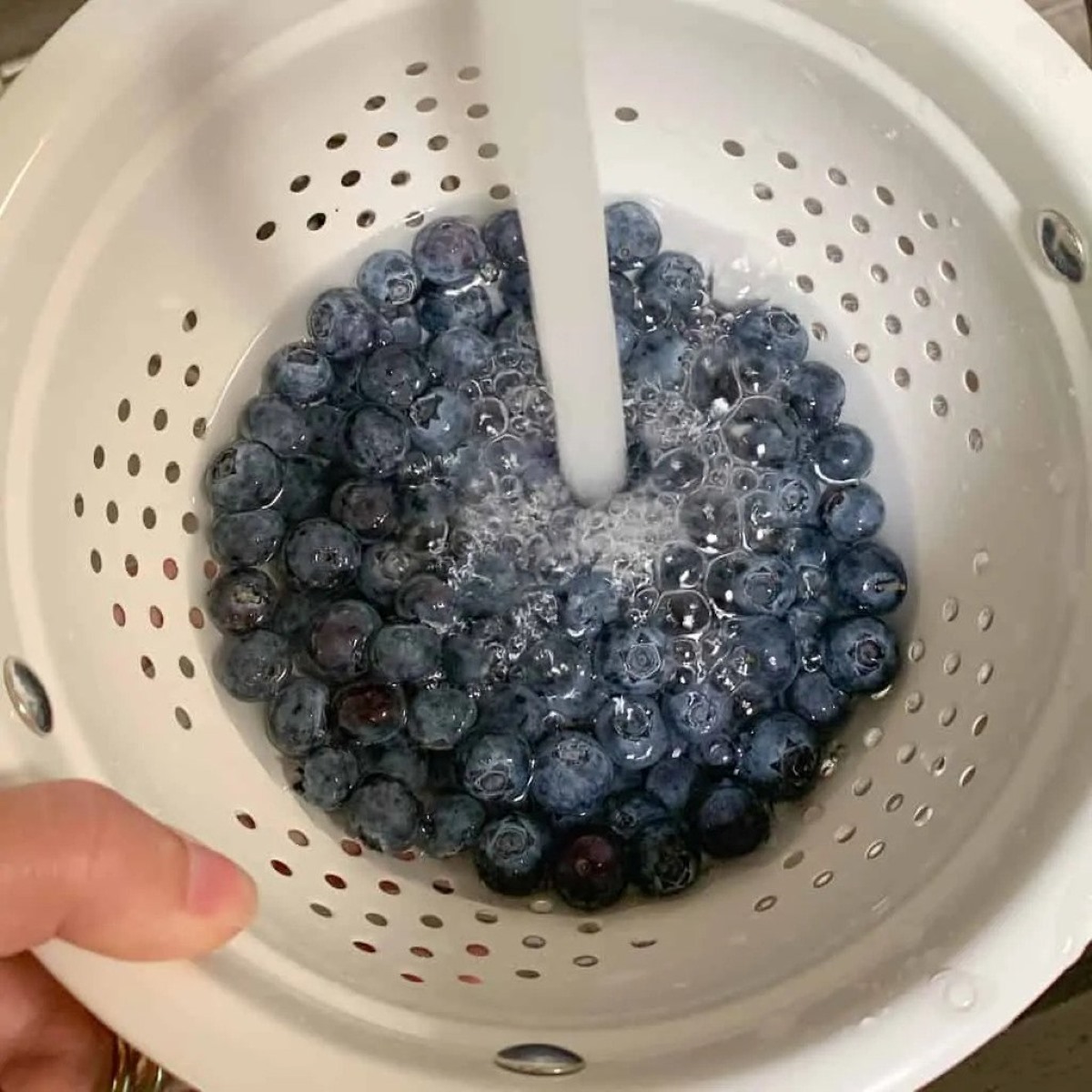

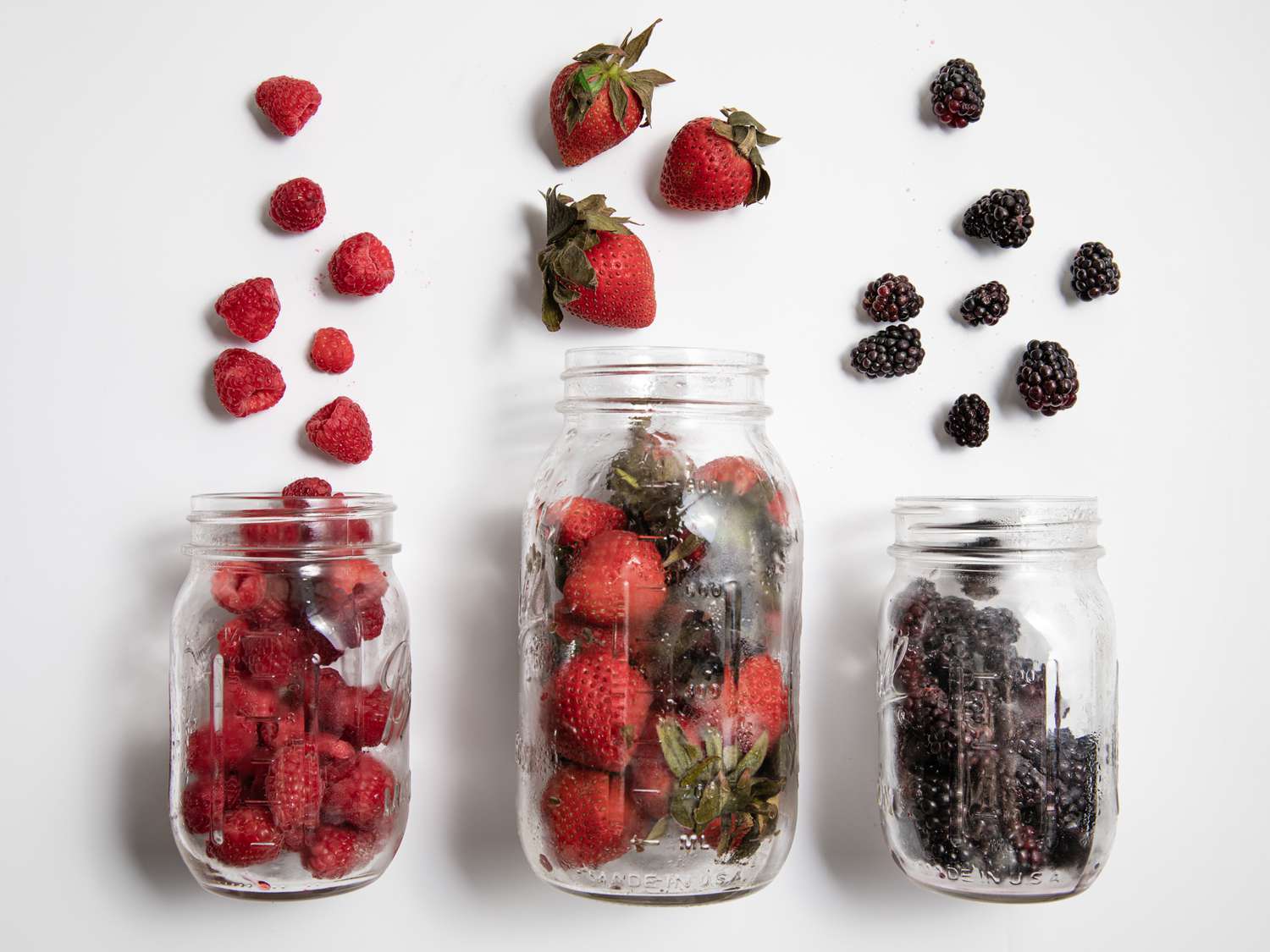
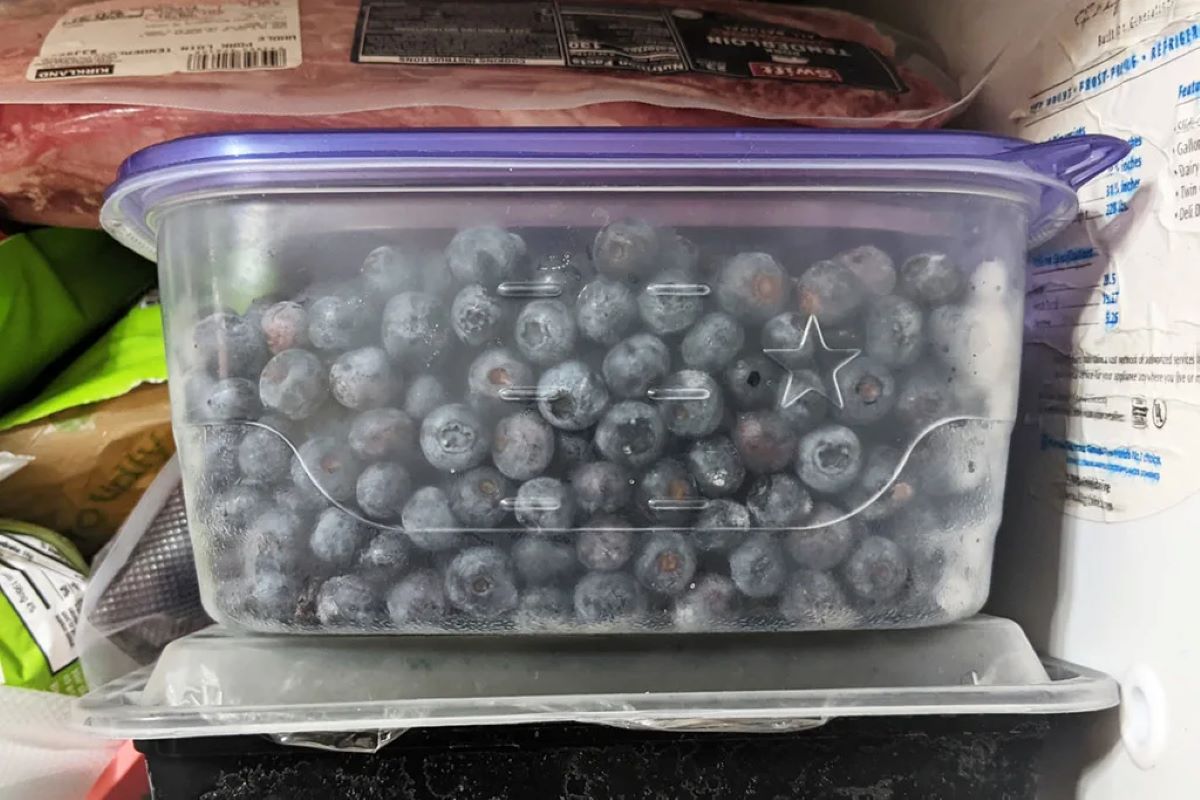



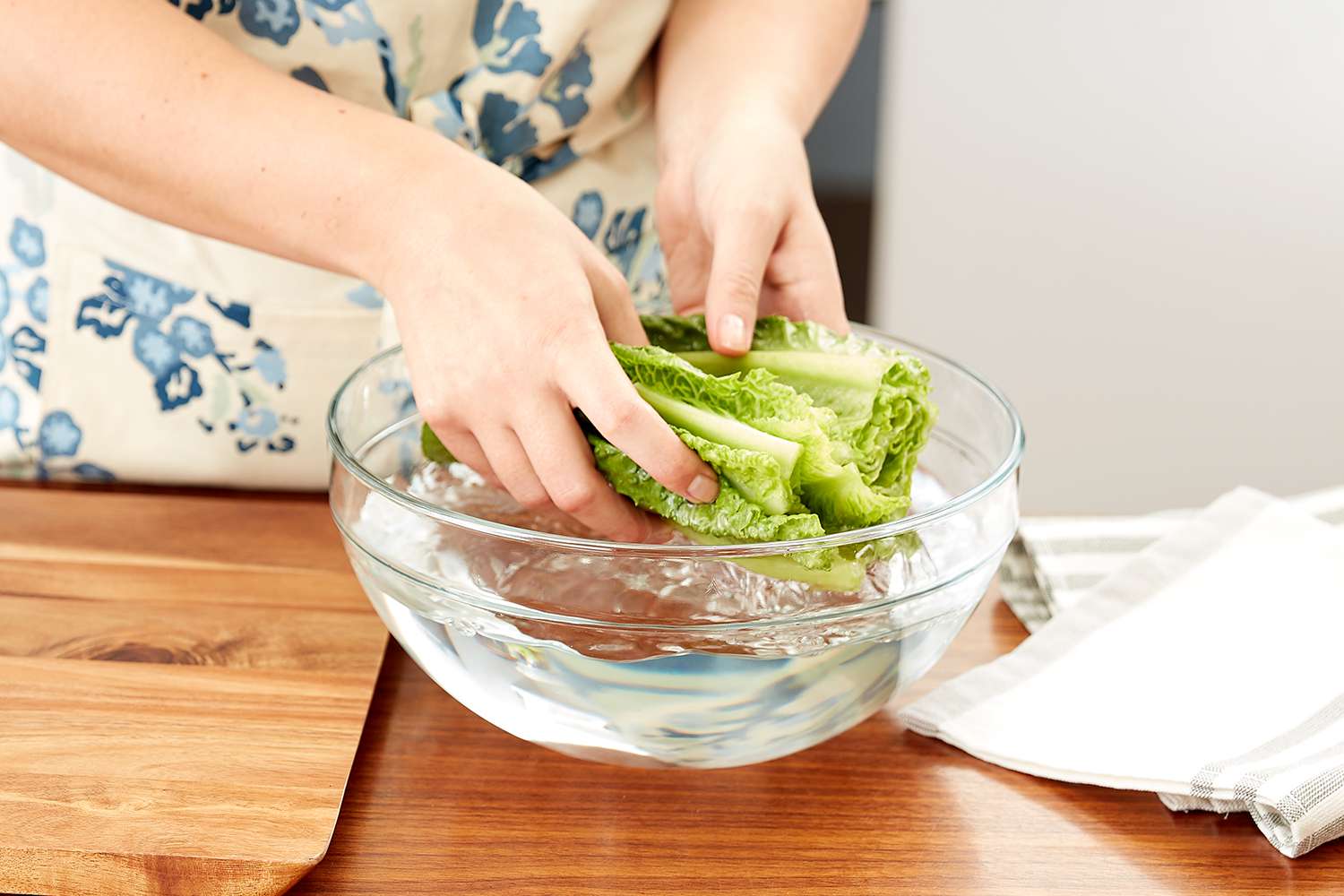
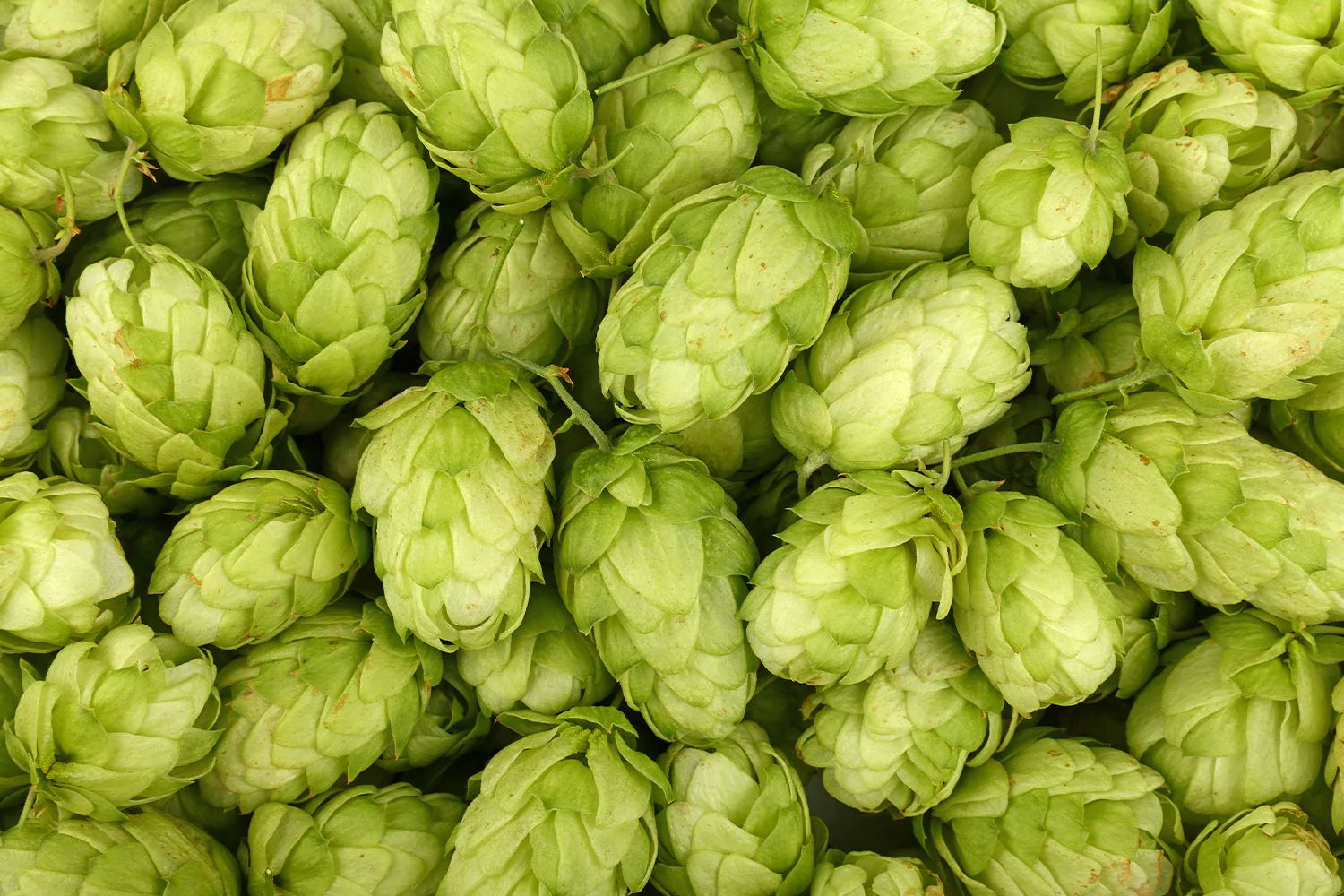

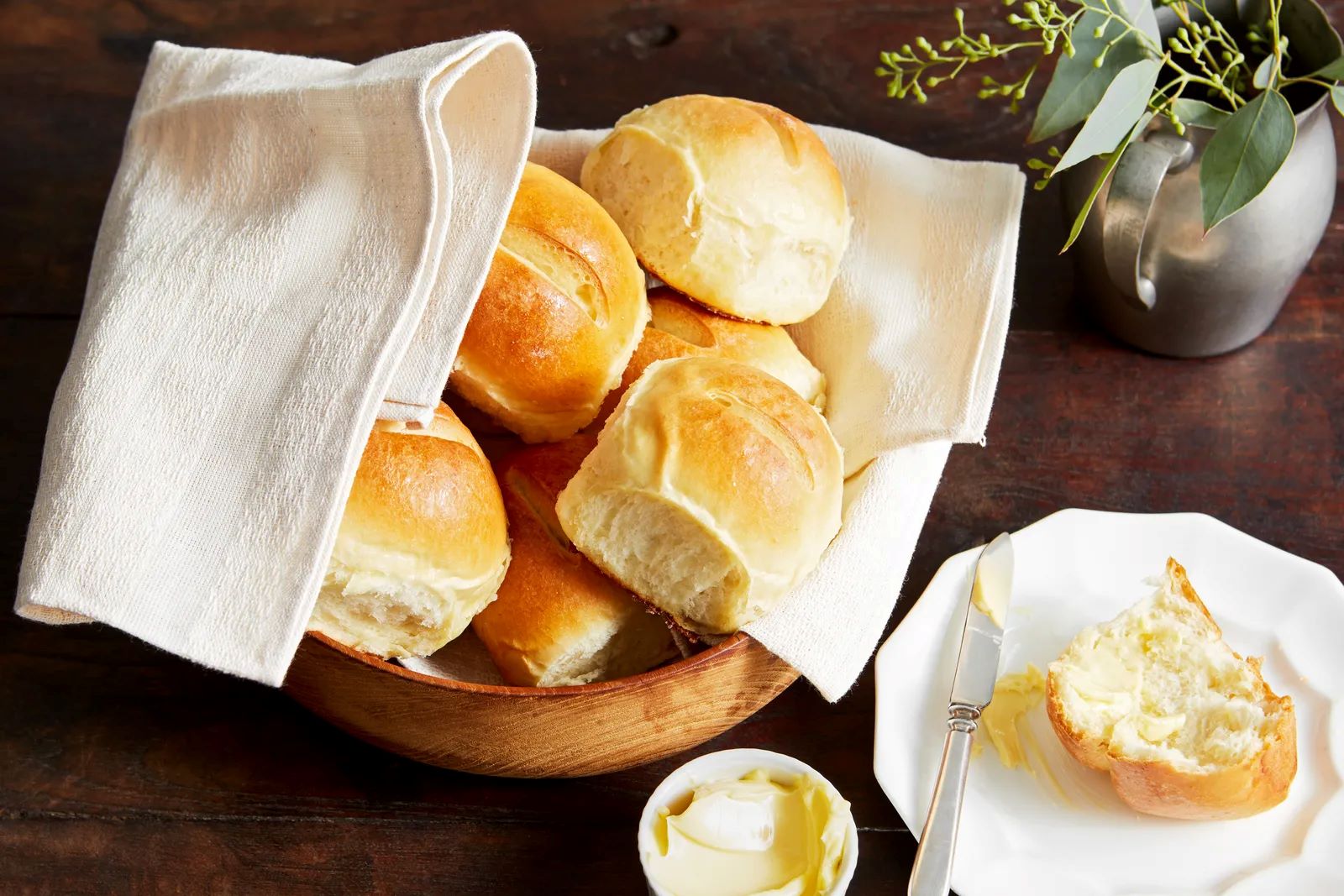
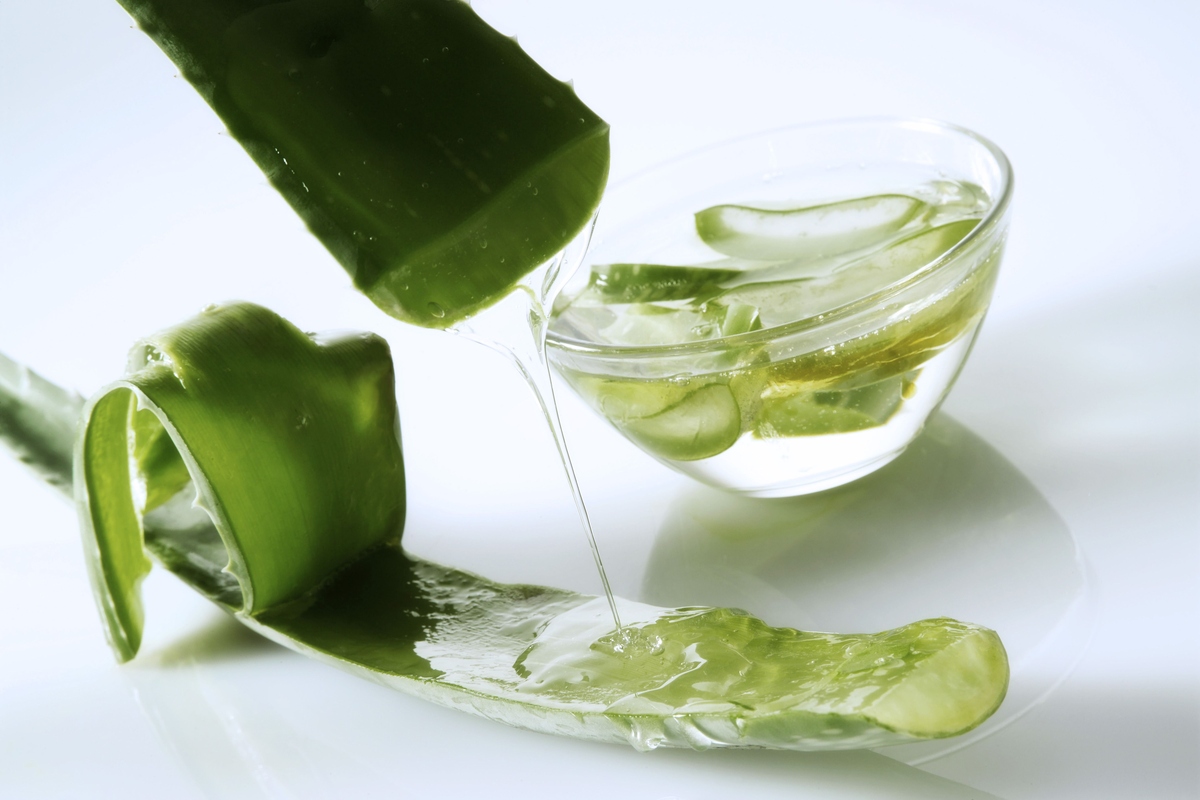


0 thoughts on “How To Store Fresh Blueberries”